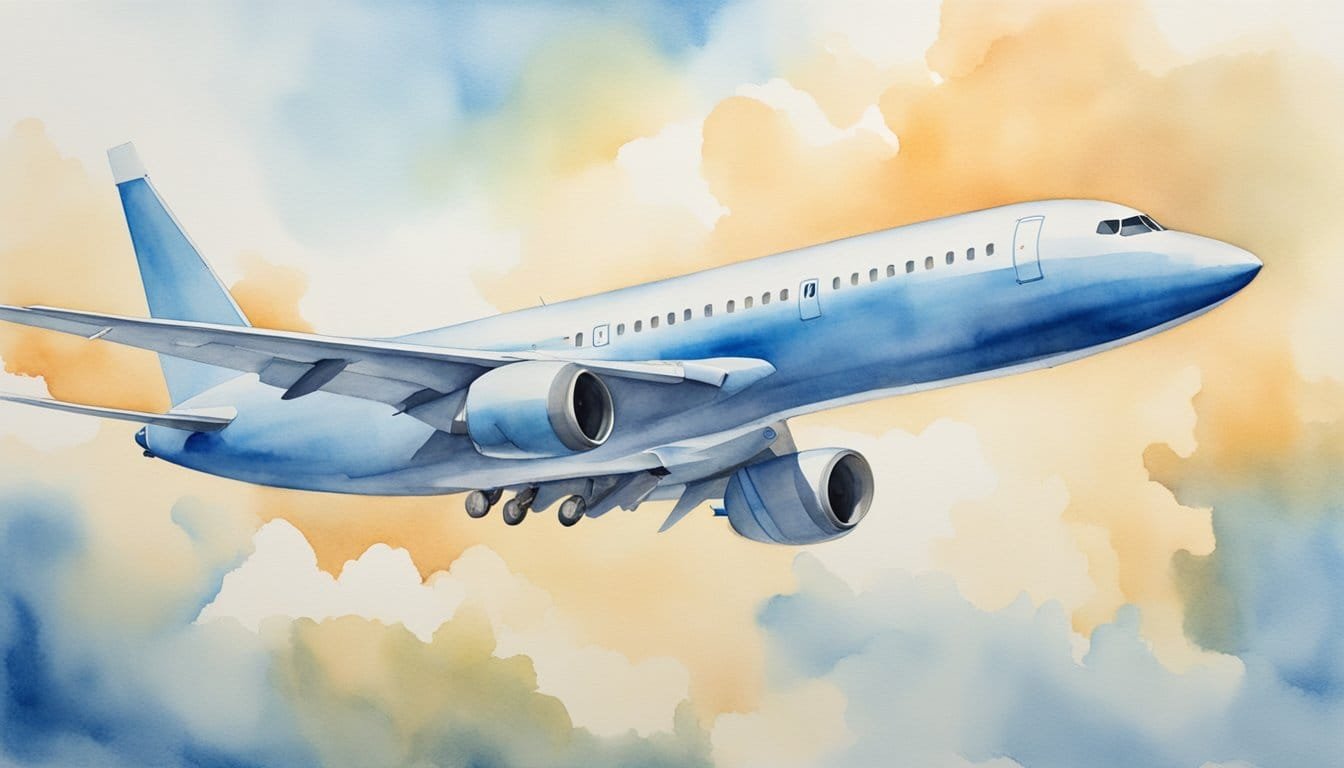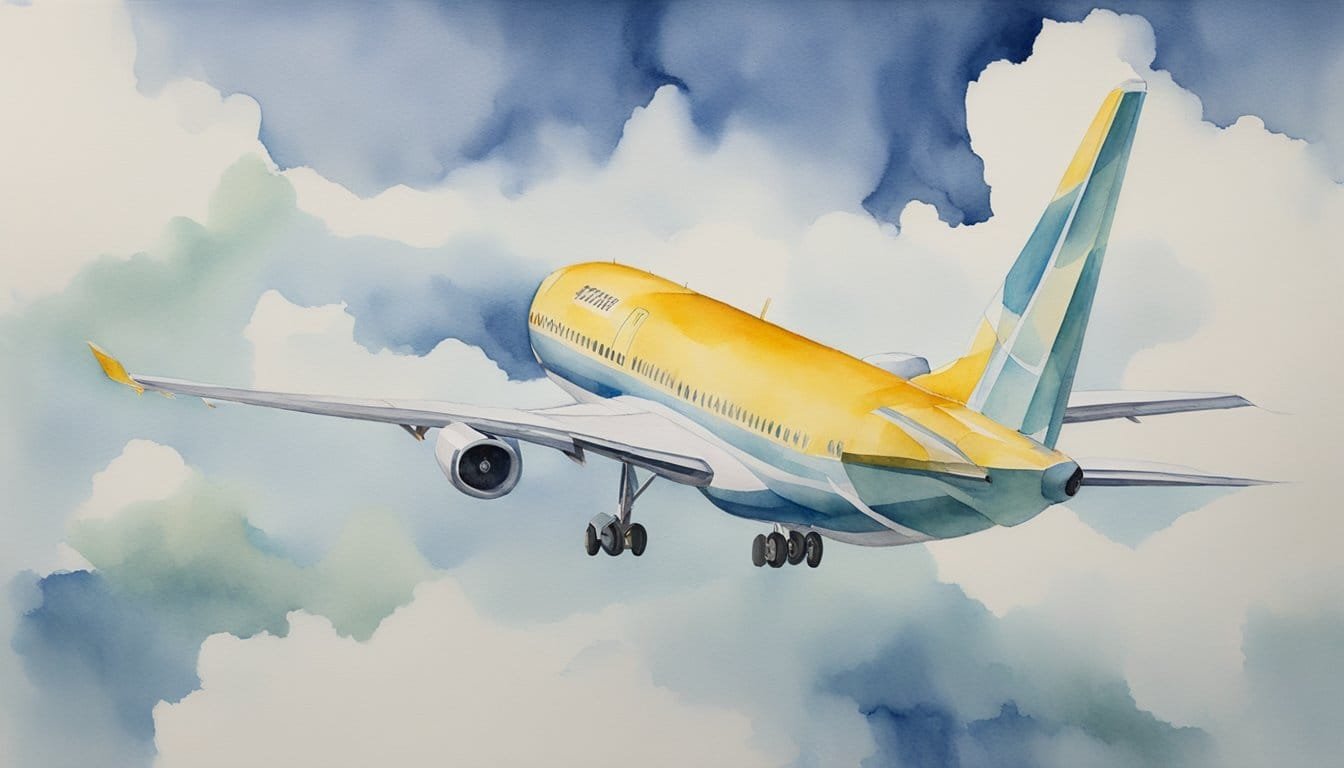The Basics of Flight

The magic of flight lies in the delicate dance between the forces at play, as air interacts with the contours of an aircraft’s wing to create the necessary lift. This journey begins with an understanding of aerodynamics and the pivotal role that air pressure and airflow perform in the skies.
Fundamentals of Aerodynamics
Aerodynamics is the study of how gases interact with moving bodies. When it comes to aircraft, the shape of the wings is critical; this is where the term airfoil comes into play. An airfoil is designed to take advantage of air’s physical properties to generate lift. As air meets a wing, it splits – part of it goes over the top, while the rest flows underneath. Wings are crafted with a curved top surface and a flatter bottom, a design that encourages air to move faster over the top, reducing the pressure above the wing. The higher pressure beneath then pushes the wing upward – an invisible hand that defies gravity and achieves flight.
The Role of Air Pressure and Airflow
Air pressure and airflow are key players that work in unison to keep a plane in the sky. It’s a principle well-known in aviation: as airflow increases over the wing’s surface, pressure above it decreases. Air pressure is simply the weight of air molecules, and at a wing’s front edge, or leading edge, these molecules are met with what is called the angle of attack. This angle is critical – it determines how much lift a wing can generate. Too little, and the wing won’t rise; too much, and the air can’t smoothly follow the wing’s shape, leading to turbulence or even stalling. Adjusting this angle becomes a delicate act, fine-tuned to maintain steady lift as an airplane slices through clouds and rides on the winds. Intricacies such as these illuminate the marvel that is aerodynamics, aeronautics, and flight mechanics.
Aircraft Dynamics and Control
When one delves into the fascinating world of aircraft dynamics and control, it’s like unlocking the secrets of the sky. Planes harness the forces of nature to achieve the incredible feat of flight, all thanks to ingenious engineering and an understanding of physics.
How Planes Achieve Lift and Thrust
To overcome gravity’s pull and take to the skies, airplanes produce lift and thrust. Lift is generated by the wings’ design, specifically their airfoil shape, which manipulates airflow to create an upward force. As air moves faster over the top surface of the wing, it decreases pressure above the wing; the higher pressure underneath then pushes the wing upward, allowing the aircraft to rise. The engines, whether they’re propellers for smaller planes or jet engines for airliners, churn out thrust. Pushing the airplane forward, thrust has to overcome aerodynamic drag and allows the plane to gain enough velocity for lift to do its job.
Flight Control Surfaces and Maneuvering
Aircraft maneuvering is a ballet of physics and skill, where pilots interact with control surfaces to direct the aircraft through three axes: yaw, pitch, and roll. The rudder at the tail fin controls yaw, which is the side-to-side movement. Ailerons, located at the trailing edge of the wings, take charge of roll, tilting the aircraft to its sides. Meanwhile, the elevators, situated on the tailplane, adjust pitch, or the up-and-down movement. Additionally, airplanes have flaps along the wings that pilots deploy during takeoff and landing to increase lift at lower speeds. In the cockpit, pilots adjust these surfaces through controls, fine-tuning their craft’s position according to Newton’s laws of motion and maintaining the crucial balance between all acting forces.
The sheer genius of aircraft design shines through when they fly at supersonic speeds, where the controls and aerodynamics become even more complex. Yet, it’s this blend of science and technology that allows planes to glide gracefully above.
Physics and Environmental Considerations

Understanding how planes fly involves more than just the mechanics of aircraft; it also requires consideration of the physical forces at play and how the environment interacts with flight dynamics.
Gravity, Weight, and Drag Factors
Gravity is the force that pulls objects toward the center of the Earth. Aircraft must overcome this gravitational pull to achieve flight. The Wright Brothers revolutionized the concept when they designed a plane with enough lift to counteract its weight, thus defying gravity. However, gravity isn’t the only force at play; drag—air resistance opposing the aircraft’s forward motion—also plays a critical role. Pilots adjust the thrust from jet engines to achieve enough force to counteract both weight and drag, allowing for the aircraft to ascend into the sky.
Influence of Weather and Altitude
Weather conditions and altitude significantly impact flight. At higher altitudes, the atmosphere’s thinner air exerts less atmospheric pressure, which can enhance fuel efficiency but also reduces engine performance and can affect wing design efficiency. Thermals, or rising currents of warm air, can aid or hinder a glider’s movement. On the other hand, factors like storms or high winds introduce additional air resistance and can compel a pilot to adjust rudders and other control surfaces to maintain stability. Understanding these factors is crucial in aeronautics, from designing aircraft capable of withstanding different conditions to planning for a safe landing.
For a deeper understanding, consider the role of environmental physics in aircraft operation as described by the following texts, which discuss physics principles in relation to flight and environmental considerations, including Principles of environmental physics: plants, animals, and the atmosphere and Flight theory and aerodynamics: a practical guide for operational safety.

